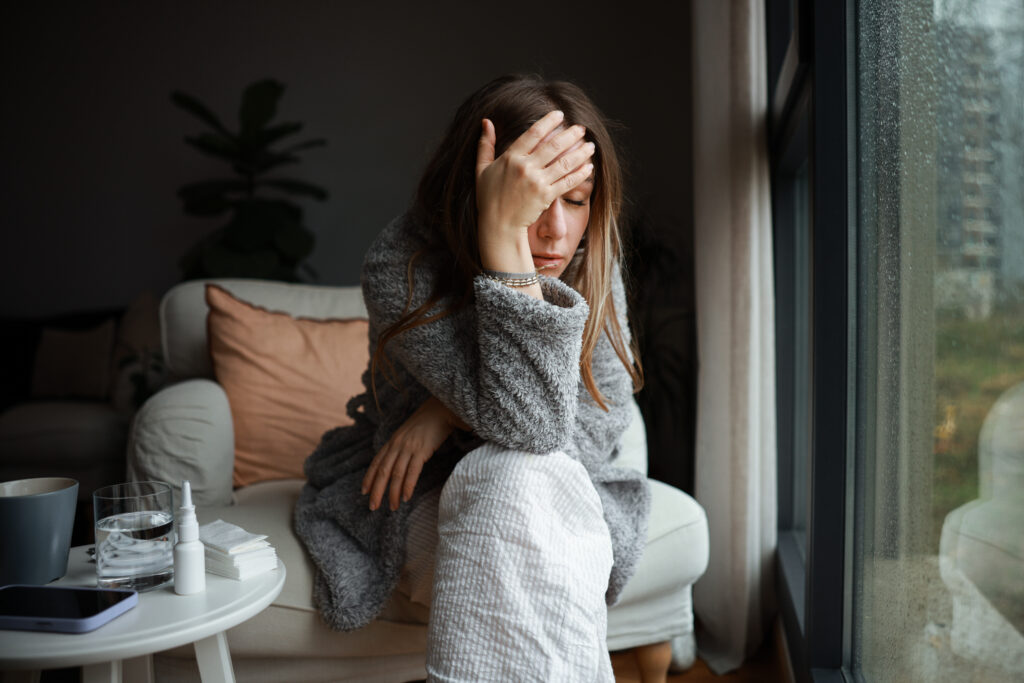Anhedonia: When Life Feels Flat and Joyless

For most of us, joy comes in the little things sharing a laugh with a friend, savoring a favorite meal or feeling connected to a loved one. But for people living with anhedonia, those sparks of pleasure disappear. Life starts to feel flat, colorless and unfulfilling, no matter what’s happening on the outside.
Anhedonia is a clinical term, but the experience is deeply personal. It’s not just “being sad.” It’s the frustrating inability to feel pleasure, even when you want to. And for many people, it can be one of the most difficult symptoms of depression, trauma or addiction recovery.
What Is Anhedonia?
Anhedonia is the reduced ability to experience joy or satisfaction. While sadness tends to come and go, anhedonia can linger, making even enjoyable activities feel hollow.
There are two main types:
- Social anhedonia – Loss of interest in connecting with others may lead you to avoid conversations, withdraw from friends or feel detached in relationships.
- Physical anhedonia – This involves a diminished ability to enjoy sensory pleasures like music, food or physical touch.
For many, the two overlap, creating a persistent sense of disconnection.
Why Does It Happen?
Researchers believe anhedonia is tied to changes in the brain’s reward system, particularly how dopamine functions. Several factors can contribute:
- Depression and mood disorders – Often the most common cause
- Trauma and PTSD – Emotional pain can numb the brain’s ability to feel joy.
- Substance use and withdrawal – Drugs like alcohol, opioids and kratom overstimulate reward pathways, and when they’re removed, the brain may struggle to regulate itself.
- Chronic stress – Prolonged cortisol exposure can blunt pleasure responses.
It’s important to remember: anhedonia is not a choice, laziness or a lack of willpower. It’s a symptom of something deeper.
How It Affects Women
At Silver Ridge, we specialize in women’s recovery, and we see how anhedonia uniquely impacts them. Caregiving roles, hormonal changes and cultural expectations can make women feel guilty or ashamed for “not enjoying” life the way they think they should.
Anhedonia may show up as:
- Loss of motivation for family, work or hobbies
- Feeling emotionally detached from loved ones
- Struggles with intimacy or connection
- Guilt over “going through the motions” without real joy
Left untreated, these challenges can deepen isolation and prolong recovery.
How It Affects Men
Though Silver Ridge focuses on women, it’s important to recognize that men also experience anhedonia—often in different ways.
- Emotional blunting or numbness instead of sadness
- Loss of interest in hobbies, sex or recreation
- Irritability or anger masking deeper emptiness
- Substance use or risk-taking as attempts to feel something
- Withdrawal from relationships
Because men are often discouraged from expressing vulnerability, their symptoms may go unrecognized. Recognizing these differences is important for families supporting a loved one.
Why It Matters in Recovery
Anhedonia can be especially tough during early sobriety. When someone stops using substances, the brain’s reward system often takes time to recalibrate. This “pleasure deficit” can make recovery feel unrewarding, even when progress is being made—leaving people vulnerable to relapse.
That’s why addressing anhedonia is essential in treatment.
Finding Joy Again: Treatment for Anhedonia
At Silver Ridge, our goal is to help women reconnect with what matters most. While there’s no quick fix, a combination of therapy, holistic practices and community support can gradually restore a sense of joy.
- Therapies like ACT and CBT teach new ways of relating to emotions and thoughts.
- Holistic practices such as yoga, meditation, art therapy and ecotherapy nurture the mind-body connection.
- Trauma-informed care addresses the root pain that often keeps joy out of reach.
- Community and peer support remind women that they are not alone in their struggle.
With time and the right support, many women begin to notice small sparks of joy returning—whether it’s laughing unexpectedly, enjoying a sunset or feeling proud of a personal milestone. Those sparks grow stronger with recovery.
Help is Here
Anhedonia can make life feel empty, but it doesn’t have to be permanent. With proper treatment, patience and support, women can rediscover meaning, connection and pleasure in life.
At Silver Ridge, we’re committed to helping women and men move through the numbness of anhedonia and reclaim their sense of joy. If you or a loved one is struggling, reaching out could be the first step toward feeling alive again.








